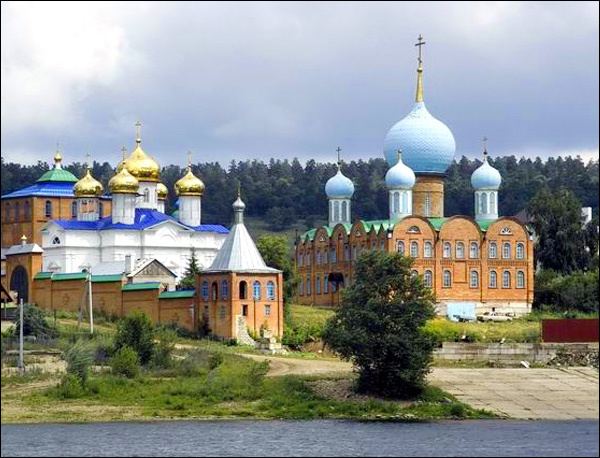Country Russia Economic region Volga Administrative center Samara Area 53,600 km² | Federal district Volga Established December 5, 1936 Area rank 50th | |
 | ||
Destinations Samara, Tolyatti, Buzuluksky Bor National Park Clubs and Teams FC Krylia Sovetov Samara, HC Lada Togliatti Points of interest Parc Youri‑Gagarine, Naberezhnaya, Stalin's Bunker, Jardin botanique de l'unive, SOK Krasnaya Glinka Colleges and Universities Samara State University, Samara State Technical, Samara State Medical, Samara State University, Samara State Academy | ||
Samara Oblast (Russian: Сама́рская о́бласть, Samarskaya oblast; [sɐˈmarskəjə ˈobləsʲtʲ]) is a federal subject of Russia (an oblast). Its administrative center is the city of Samara. As of the 2010 Census, the population of the oblast was 3,215,532.
Contents
Map of Samara Oblast, Russia
History
During the Revolution of 1905, a rebellion took place on November that year at the village of Novaya Tsarevshchina (now Volzhsky, at the center of Samara Oblast) and spread to the village of Stary Buyan, leading to the formation of the short-lived separatist state, the Stary Buyan Republic. It was suppressed by a punitive expedition of Cossacks and gendarmes led by the vice-governor of the gubernia.
Middle Volga Oblast was established on May 14, 1928. On October 20, 1929, it was transformed into Middle Volga Krai, which was renamed Kuybyshev Krai on January 27, 1935. On December 5, 1936, Kuybyshev Krai was transformed into Kuybyshev Oblast (Russian: Ку́йбышевская о́бласть, tr. Kuybyshevskaya Oblast; IPA: [ˈkujbɨʂɨfskəjə ˈobləstʲ]) upon the adoption of the 1936 Soviet Constitution. On January 25, 1991, the oblast was renamed Samara Oblast.
Demographics
Population: 3,215,532 (2010 Census); 3,239,737 (2002 Census); 3,265,586 (1989 Census).
Ethnic groups: According to the 2010 Census, the ethnic makeup of the oblast was:
2009 - 1.42 | 2010 - 1.44 | 2011 - 1.44 | 2012 - 1.54 | 2013 - 1.59 | 2014 - 1.65 | 2015 - 1.71 | 2016 - 1.72(e)
Economy
In 1997, Samara Oblast became one of the few federal subjects to receive the approval of the President of Russia to implement external bonded loans (Presidential decree № 1212, dated 12.10.1997 “On Creating Conditions to Conduct Loans Operations on the Internal and External Capital Markets”).
Politics
During the Soviet period, the high authority in the oblast was shared between three persons: The first secretary of the Samara CPSU Committee (who in reality had the biggest authority), the chairman of the oblast Soviet (legislative power), and the Chairman of the oblast Executive Committee (executive power). Since 1991, CPSU lost all the power, and the head of the Oblast administration, and eventually the governor was appointed/elected alongside elected regional parliament.
The Charter of Samara Oblast is the fundamental law of the oblast. The Legislative Assembly of Samara Oblast is the province's standing legislative (representative) body. The Legislative Assembly exercises its authority by passing laws, resolutions, and other legal acts and by supervising the implementation and observance of the laws and other legal acts passed by it. The highest executive body is the Oblast Government, which includes territorial executive bodies such as district administrations, committees, and commissions that facilitate development and run the day to day matters of the province. The Oblast administration supports the activities of the Governor who is the highest official and acts as guarantor of the observance of the oblast Charter in accordance with the Constitution of Russia.
Governors:
Religion
According to a 2012 official survey 35% of the population of Samara Oblast adheres to the Russian Orthodox Church, 7% are unaffiliated generic Christians, 1% are Orthodox Christian believers who do not belong to any church or are members of non-Russian Orthodox churches, 3% are Muslims, and 1% of the population are adherents of Rodnovery (Slavic folk religion). In addition, 30% of the population declares to be "spiritual but not religious", 13% is atheist, and a further 10% follows other religions or did not give an answer to the question.
